Tent-kitchen: features and varieties
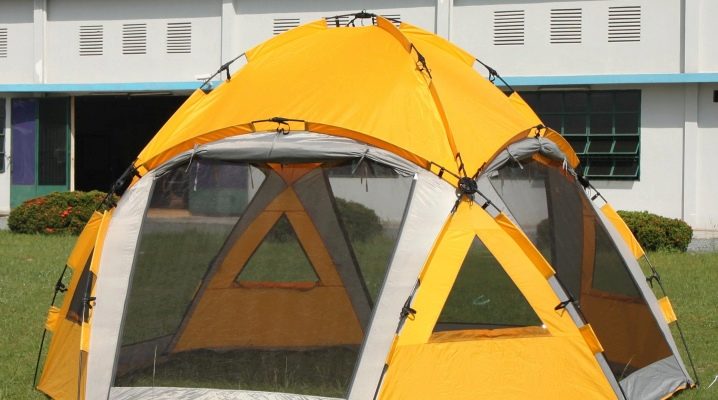
Fans of comfortable outdoor recreation relatively recently were able to appreciate the tent-kitchen that appeared on the market for camping equipment. This tourist attribute is designed to provide convenience and safety in the process of cooking in the fresh air. They are used mainly in long-term parking and camping, but will also be useful for auto travelers.
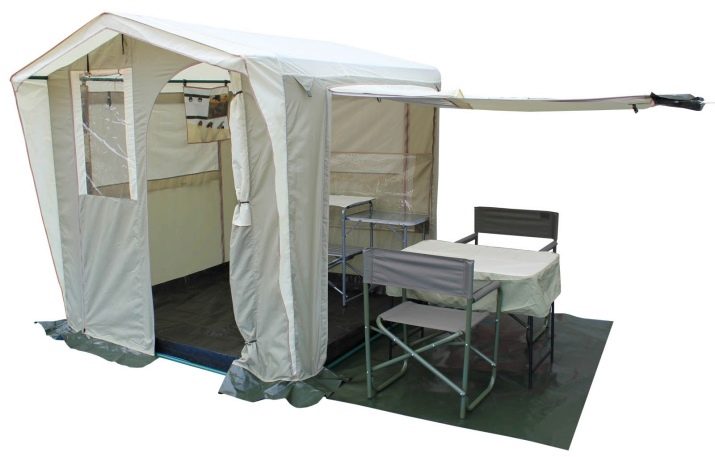
Purpose and device
Because cooking requires freedom of movement, kitchen tents are quite spacious and have a height of about 2 m, so that you can stand upright. Such tents are called tents or simply tents.
Kitchen tents have soft plastic windows and ventilation valves. The material of the walls must be dense and waterproof, guaranteeing the protection of food and kitchen equipment from rain and wind. Besides, the material must have fireproof qualities to prevent ignition from an accidental spark or hot dishes. It is also recommended to use a special kitchen apron in the area where the stove is installed to protect the walls of the tent from sparks and drops of oil.
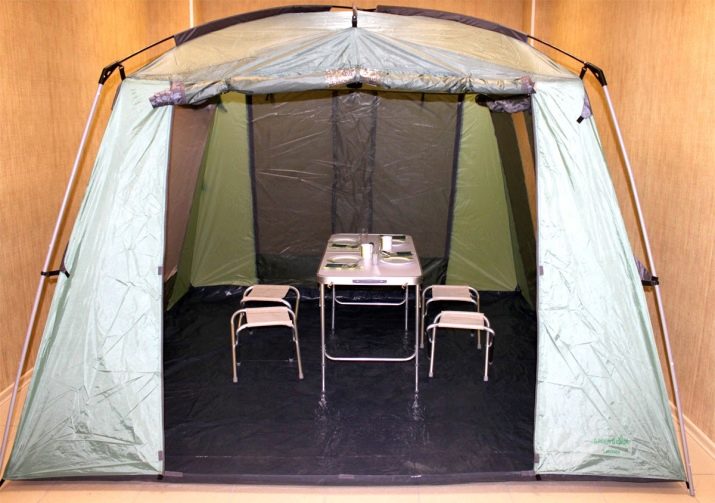
Depending on the size of the tourist tent-kitchen can serve not only for cooking, but also as a dining room. This type of tent usually does not have a floor, and it is much more convenient - you do not have to worry about shaking out crumbs and other debris, which is difficult to do without when cooking.
Due to its large size, the tent must have reliable supports and extensions that provide wind resistance to the structure. This is necessary both to protect against the overturning of the tent, and from blowing out the fire on the stove.


Peculiarities
The material for summer models of tents has a protective layer that protects the fabric from destruction under the influence of sunlight.
A summer tent is usually equipped with a mosquito net, which protects not only people from blood-sucking insects, but also food from flies. Such a mesh can be closed with fabric walls with the onset of evening, which better retain heat. The canopy that serves as an entrance can be fixed with the help of racks in the form of a canopy, creating additional space sheltered from precipitation.
Summer tents differ from winter tents in lighter frame tubes, which greatly facilitates quick installation and transportation.
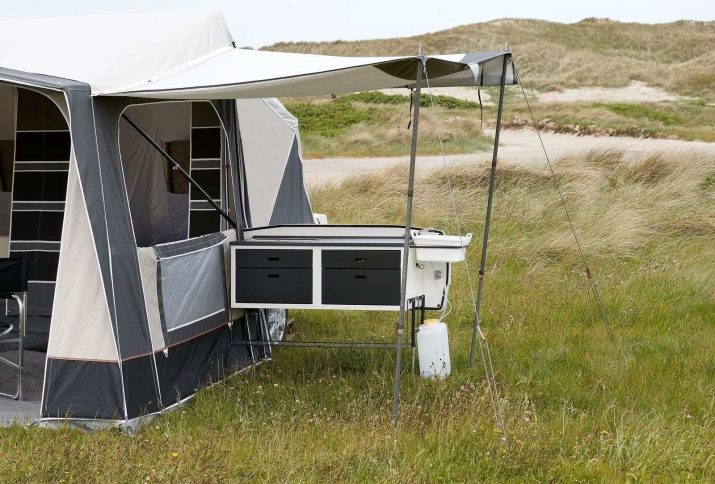
Varieties
Kitchen tents, or tents, can be divided into several types depending on the purpose.
- Expandable tent. It consists of an awning and four supports or a prefabricated base. Walls are not provided. Such a tent weighs little, is easy to transport and quickly installed. However, it does not protect well from heavy rainfall and from insects. Therefore, folding tents are practically not used as a tent-kitchen - they are rather tents for recreation.
- Gardening or camping. Equipped with walls and mosquito nets, and may also have windows and removable partitions inside. Good for camping, cottage or outdoor recreation.
- Pavilion. A very large tent, suitable for organizing various holidays in nature or relaxing for a large company. Too big for a kitchen tent.
- Marching. This type is the most suitable for arranging a kitchen in it. Camping tents are lightweight, waterproof and wind resistant. In such a tent, there are necessarily mosquito nets and windows.



How to choose?
When choosing a tent for arranging a camp kitchen, you should pay attention to a number of important parameters.
First of all, it is a form. The most common are quadrangular tents, although there are also options with five or more corners, bringing the shape of the base of the tent closer to the round one. The choice depends on how you intend to place the equipment and furniture inside the tent.
Next, it is important to pay attention to the design of the walls. Straight options provide more freedom to move at full height. A tent with sloping walls is more wind resistant.
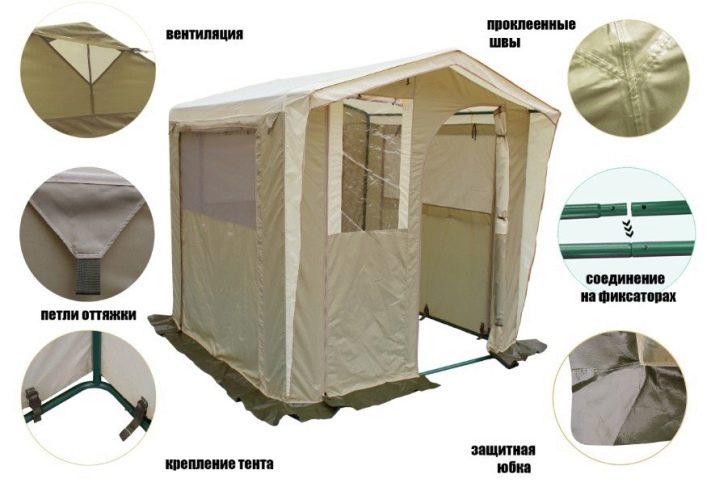
The roof must be sloping so that rainwater does not accumulate. Diverter valves for ventilation are also desirable.
Awnings are made from synthetic materials of various price and quality. More expensive models of tents have canopies made of polyester fabric.
The base consists of fiberglass or aluminum tubes. The last option is a little easier.
In camping conditions, importance is usually attached to the weight of the tent. Light models have a higher price.

Review of the tent-kitchen "Lux 2x2" from "Mitek", see below.




























